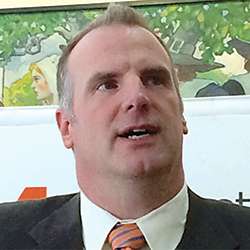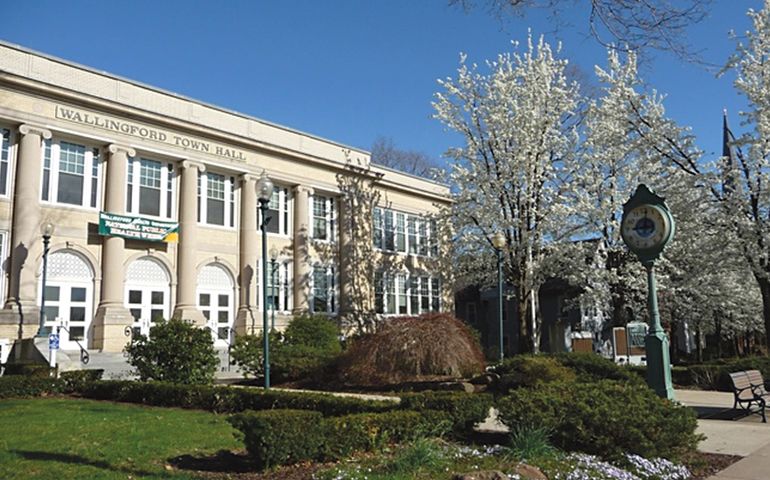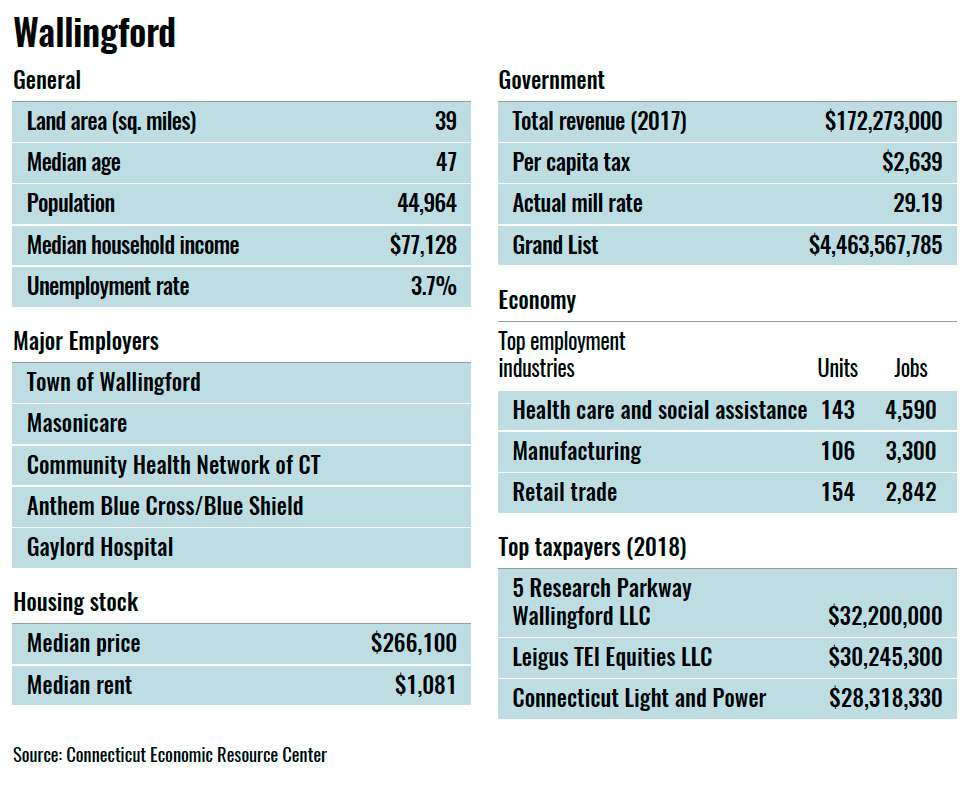
Processing Your Payment
Please do not leave this page until complete. This can take a few moments.
- News
-
Editions
View Digital Editions
Biweekly Issues
- May 13, 2024
- April 29, 2024
- April 15, 2024
- April 1, 2024
- March 18, 2024
- March 4, 2024
- February 19, 2024
- February 5, 2024
- January 22, 2024
- + More
Special Editions
- Lists
- Viewpoints
- HBJ Events
- Business Calendar
- Custom Content
Wallingford among municipalities eager for stimulus funding
 Photo | Wikimedia Commons, Nancysands1965
The town of Wallingford, whose South Main St. town hall is shown above, is trying to figure out how to get access to federal stimulus funds.
Photo | Wikimedia Commons, Nancysands1965
The town of Wallingford, whose South Main St. town hall is shown above, is trying to figure out how to get access to federal stimulus funds.
As Wallingford trudges through the coronavirus pandemic and all the uncertainty it’s created, Mayor William Dickinson is sure the town will seek aid, but isn’t sure how to go about it.
Wallingford is currently operating on a $169-million budget, and COVID-19’s economic impact will likely put pressure on the finances of the town and the rest of Connecticut’s 169 municipalities.
The federal government’s $2-trillion federal stimulus program — known as the CARES Act — has set aside more than $150 billion for state, municipal and tribal governments, but didn’t leave a clear blueprint on how to distribute it.
“Certainly, Wallingford will be interested in participating” in any aid program, Dickinson said. “[But] it’s unclear what we can use the money for once it becomes available.”
Wallingford isn’t alone in playing the waiting game when it comes to federal aid, said Joe DeLong, executive director of the Connecticut Conference of Municipalities (CCM). Most cities and towns are waiting to see how the state will distribute the money.

Under the CARES Act, stimulus funds are distributed to states, and directly to municipalities with 500,000 or more residents, DeLong said. Since Connecticut doesn’t have a single municipality that meets that threshold, state officials are in charge of doling out funds. But since the Lamont administration is bogged down with more immediate issues, town leaders are having to wait their turn, DeLong said.
“I think [Gov. Ned Lamont’s] administration is drinking from the firehose like everyone else and their No. 1 priority is health and safety,” DeLong said, noting that Lamont’s Chief of Staff Paul Mounds assured him state officials will meet with municipal leaders about aid. “This conversation [about municipal aid] has to take place, but at the same time I’m not being critical.”
The COVID-19 pandemic hasn’t interfered with some of Wallingford’s largest capital projects like construction of a $72-million proton beam cancer treatment facility in which Yale New Haven Health and Hartford HealthCare are co-investing, said Wallingford Economic Development Specialist Tim Ryan.
Like town governments, businesses are also struggling to figure out what aid they qualify for, and what loans or grants they should apply for, Ryan said.
“It’s been a scatter,” Ryan said. “The CARES Act was signed into law … and now everyone’s like, ‘OK, how’s this going to work?’ "
[Read more: HBJ examines developments in CT towns, cities]
When it comes to the pandemic’s possible long-term effects on the local economy, Wallingford has a few things to worry about, Dickinson said.
Wallingford’s main source of revenue is property taxes. But an economic downturn could result in lower property values, meaning less tax revenue for services, Dickinson said.
“[Lower property tax revenue is] endemic of lower economic activity … and unfortunately those are the times when there’s more need for services,” he said. “It’s a terrible conflict that does not have easy solutions.”
Since all of Connecticut’s 169 cities and towns rely on property tax dollars as a main source of income, CCM’s priority is keeping businesses and landlords from defaulting on leases and mortgages, DeLong said.
That’s why CCM is pushing for relief for commercial landlords, DeLong said.
“We wanted to create an opportunity where the landlords wouldn’t have to pay property taxes for a while in exchange for not collecting rent from [struggling] tenants,” DeLong said, adding that it’s critical for towns that as many businesses as possible remain viable. “We want to make sure that those tenants are able to stay in business and get through this.”
CCM also wrote a letter to Connecticut’s Congressional delegation calling for a broadening of federal stimulus so that municipalities with fewer than 500,000 residents can receive direct funding.
“The CARES Act provided federal funds to assist only cities with populations over 500,000,” DeLong wrote. “Therefore, Connecticut municipalities received no direct funding as they struggle to protect and serve residents during a deadly pandemic.”
While stimulus funding is in a holding pattern for Wallingford, Dickinson said he is optimistic that local, state and federal officials will successfully work together on aid distribution, and that Wallingford will weather the economic storm.
“We need to have a glimmer of light at the end of this tunnel that this pandemic is coming to an end,” Dickinson said. “I think that will help a lot of people think ahead and plan for the future.”


2022 Giving Guide
This special edition informs and connects businesses with nonprofit organizations that are aligned with what they care about. Each nonprofit profile provides a crisp snapshot of the organization’s mission, goals, area of service, giving and volunteer opportunities and board leadership.
Learn more
Subscribe
Hartford Business Journal provides the top coverage of news, trends, data, politics and personalities of the area’s business community. Get the news and information you need from the award-winning writers at HBJ. Don’t miss out - subscribe today.
Subscribe
2024 Book of Lists
Delivering Vital Marketplace Content and Context to Senior Decision Makers Throughout Greater Hartford and the State ... All Year Long!
Read Here-
2022 Giving Guide
This special edition informs and connects businesses with nonprofit organizations that are aligned with what they care about. Each nonprofit profile provides a crisp snapshot of the organization’s mission, goals, area of service, giving and volunteer opportunities and board leadership.
-
Subscribe
Hartford Business Journal provides the top coverage of news, trends, data, politics and personalities of the area’s business community. Get the news and information you need from the award-winning writers at HBJ. Don’t miss out - subscribe today.
-
2024 Book of Lists
Delivering Vital Marketplace Content and Context to Senior Decision Makers Throughout Greater Hartford and the State ... All Year Long!
ABOUT
ADVERTISE
NEW ENGLAND BUSINESS MEDIA SITES
No articles left
Get access now
In order to use this feature, we need some information from you. You can also login or register for a free account.
By clicking submit you are agreeing to our cookie usage and Privacy Policy
Already have an account? Login
Already have an account? Login
Want to create an account? Register
Get access now
In order to use this feature, we need some information from you. You can also login or register for a free account.
By clicking submit you are agreeing to our cookie usage and Privacy Policy
Already have an account? Login
Already have an account? Login
Want to create an account? Register






0 Comments